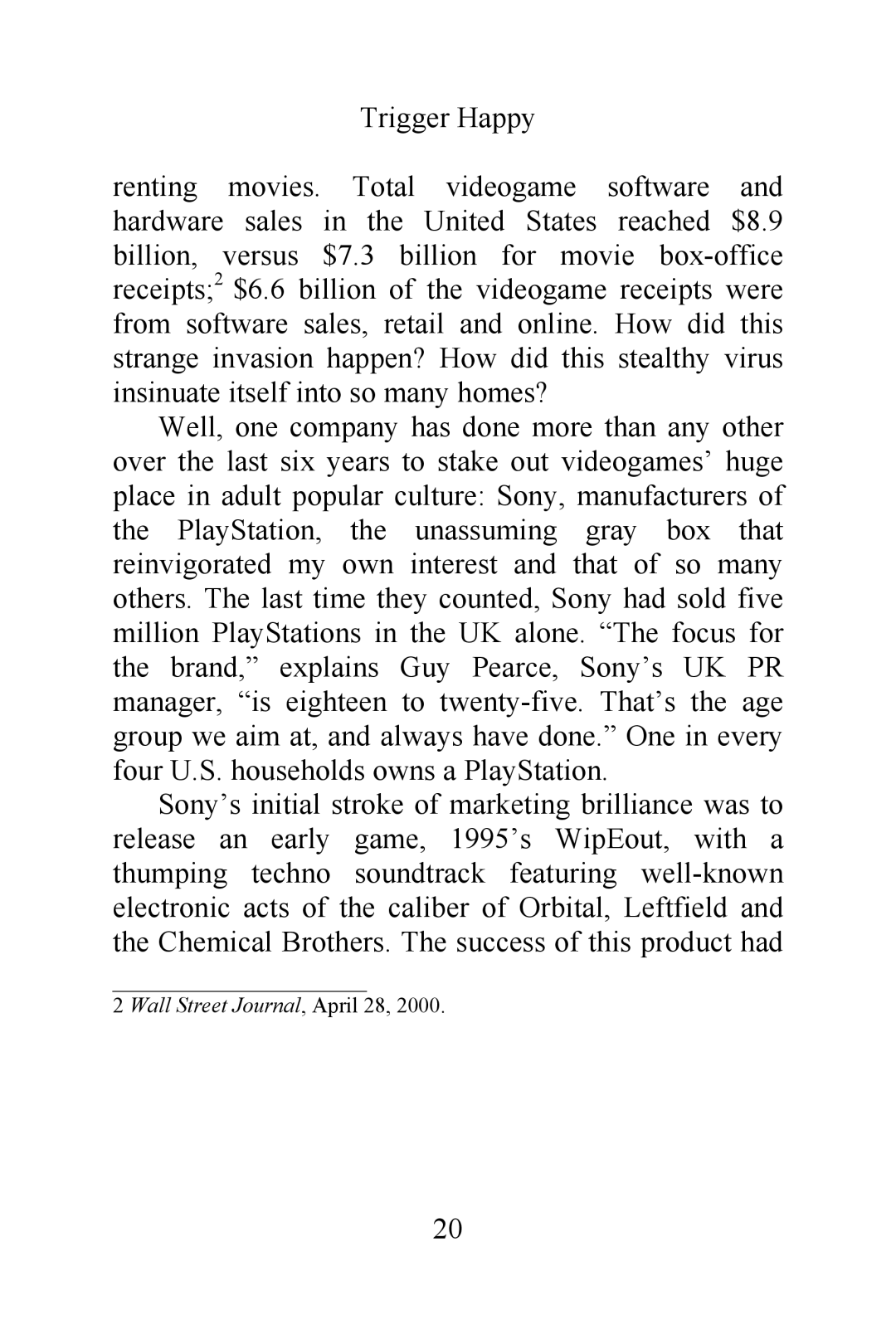Trigger Happy
renting movies. Total videogame software and hardware sales in the United States reached $8.9 billion, versus $7.3 billion for movie
Well, one company has done more than any other over the last six years to stake out videogames’ huge place in adult popular culture: Sony, manufacturers of the PlayStation, the unassuming gray box that reinvigorated my own interest and that of so many others. The last time they counted, Sony had sold five million PlayStations in the UK alone. “The focus for the brand,” explains Guy Pearce, Sony’s UK PR manager, “is eighteen to
Sony’s initial stroke of marketing brilliance was to release an early game, 1995’s WipEout, with a thumping techno soundtrack featuring
_________________
2 Wall Street Journal, April 28, 2000.
20
